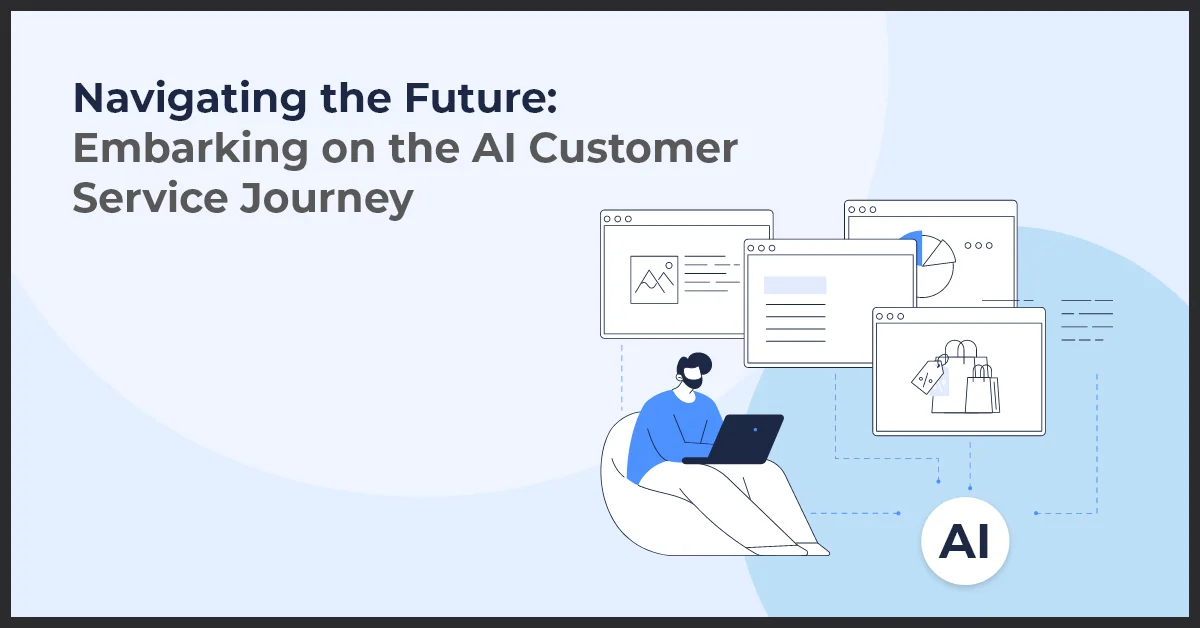Metaverse Marketing: Everything You Need to Know

Published on: March 17, 2022
Updated on: June 26, 2024
574 Views
- Digital Marketing
21 min read
The Metaverse has gained much popularity among the digital natives in the last few months. Ask Google—this term was searched the most during the April 18th-24th week in 2021. But is it a buzzword or is it buzzworthy?
Even though still in its infancy, the Metaverse is likely to shape the future of marketing and the overall business. This is because it works round the clock and has its own economies powered by creators and infrastructure providers.
So, should marketers care about it? How should you make a move? This article will decode the Metaverse concept and provide some of the best ways to create marketing strategies around it.
What Is Metaverse?
The Metaverse aims to replicate the actual world in a hyper-real alternative digital space. In simple terms, it is a parallel virtual universe that comprises several technologies such as videos, augmented and virtual realities, and 3D avatars. The combination of such multiple interoperable online technologies creates a universe for people to shop, travel, socialize, trade, and interact with each other in their digital avatars.
In other words, the Metaverse exists in real time, contains user-generated content, and is always active and a fully-functional universe.
Still not sure what it means?
Think of the Metaverse as Fortnight, Animal Crossing, Roblox, Minecraft, or any virtual reality video game. Such games give you an avatar in real time, which attends events happening in a particular Metaverse, lives like we do in our actual lives, and fights against each other.
The early adopter of the Metaverse is the gaming industry, with 59% of industry experts claiming that the gaming industry will dominate VR investments in the coming years. But that does not mean other companies cannot follow suit.
The Power of Brands in the Metaverse
The metaverse has opened up new possibilities for brands to connect with consumers in immersive and interactive ways. As virtual reality and augmented reality technologies continue to advance, brands have the opportunity to establish a strong presence and cultivate meaningful relationships within this digital landscape.
A. Overview of Metaverse Branding
In the metaverse, branding takes on a whole new dimension. Brands can create virtual representations of their physical counterparts or develop entirely unique identities that exist solely in the digital realm. This allows for greater flexibility and creativity in establishing brand narratives and visual identities.
B. Establishing and Promoting Brand Identity within the Metaverse
Building a strong brand identity within the metaverse requires a strategic approach. Brands must carefully consider their target audience and tailor their messaging and visuals to resonate with this digital-savvy demographic. By leveraging immersive experiences and interactive storytelling, brands can captivate users and reinforce their brand's core values and mission.
C. Creating Virtual Brand Experiences
One of the key advantages of the metaverse is its ability to create unique and memorable brand experiences. Brands can design virtual worlds, events, and experiences that fully immerse users in their brand's universe. Whether it's attending a virtual concert, exploring a virtual store, or participating in virtual social events, these experiences allow brands to forge deeper connections with their audience.
D. Delivering Virtual Products and Services
The metaverse offers brands the opportunity to deliver virtual products and services that transcend traditional limitations. From virtual fashion and accessories to digital artwork and virtual real estate, brands can create and sell virtual assets that enhance users' digital lives. This not only generates new revenue streams but also strengthens brand loyalty and engagement.
E. Maintaining a Consistent Brand Image across the Metaverse
Consistency is key in the metaverse. Brands must ensure that their visual identity, messaging, and overall brand image are consistent across all virtual platforms and experiences. This helps to reinforce brand recognition and build trust among users. By establishing clear guidelines for brand representation in the metaverse, brands can maintain a cohesive and recognizable presence.
In conclusion, the metaverse presents brands with an unprecedented opportunity to connect with consumers on a deeper level. By leveraging immersive experiences, delivering virtual products and services, and maintaining a consistent brand image, brands can establish themselves as leaders in this evolving digital landscape.
Fostering User Engagement and Community Building
Creating a thriving community within the metaverse requires a strategic approach to foster user engagement and build a sense of belonging. By implementing the following strategies, brands can establish strong connections with their audience and maximize their presence in virtual spaces.
A. Strategies for User Participation in the Metaverse
Encouraging active user participation is essential for creating an immersive and engaging metaverse experience. Brands can achieve this by:
- Providing interactive elements: Incorporating interactive features such as quizzes, challenges, and polls can prompt users to engage with the brand.
- Incentivizing participation: Offering rewards or perks for active participation can motivate users to engage and contribute to the community.
- Implementing gamification: Introducing game-like elements such as leaderboards, achievements, and badges can make the metaverse experience more enjoyable and competitive.
B. Organizing Virtual Events and Maximizing User Engagement
Virtual events offer a unique opportunity to bring the community together and foster engagement. Brands can create unforgettable experiences by:
- Crafting captivating event themes: Designing immersive themes that resonate with the audience can attract their interest and encourage participation.
- Facilitating networking opportunities: Enabling users to connect with like-minded individuals and facilitating meaningful conversations can enhance user engagement and build relationships.
- Offering exclusive content: Providing exclusive access to content, speakers, or workshops incentivizes user participation and adds value to the event.
C. Building Dedicated Communities within Virtual Spaces
Creating dedicated communities within the metaverse can foster a sense of belonging and encourage long-term engagement. Brands can achieve this by:
- Establishing virtual hubs: Creating dedicated spaces where users can congregate, share ideas, and discuss common interests can foster a sense of community.
- Encouraging user-generated content: Inviting users to contribute and showcase their creativity within the community can strengthen their connection with the brand.
- Facilitating peer-to-peer interactions: Enabling users to communicate and collaborate with each other can foster a supportive and vibrant community atmosphere.
D. Enhancing Social Interactions in the Metaverse
Enabling social interactions within the metaverse is crucial for building a sense of community and facilitating user engagement. Brands can enhance social interactions by:
- Integrating social media features: Integrating social media functionalities within virtual spaces enables users to connect and share their experiences with a wider audience.
- Creating social hubs: Designing social spaces where users can engage in casual conversations and connect with each other fosters a lively and social atmosphere.
- Implementing chat and messaging systems: Providing chat and messaging features allows users to communicate seamlessly, fostering real-time interactions and building connections.
Why Brands Need to Market in the Metaverse
Let us cut through the hype and look at some data around the Metaverse:
- Gartner named Metaverse one of the top five emerging technologies in 2022.
- Approx. 46 million people viewed Travis Scott's Astronomical show in the Metaverse.
- A user on the Metaverse purchased a digital Gucci bag for over $4,100, outbidding the actual price of the bag in real life.
Metaverse is not just limited to luxury brands. Companies like Nike, Hyundai, and Disney are also investing in it to engage their audiences. Nike has already filed four patent and trademark applications, while Disney has filed a patent for a "virtual-world simulator" and plans to build a virtual theme park.
Metaverse is the new way to reach the tech-savvy audience. Often dubbed as the next internet, it allows brands to target Millennials and Gen X and engage and update them with the latest products and technologies. With more and more brands starting to incorporate it as part of their marketing strategy, one thing is sure—Metaverse is here to stay and brands will need to adopt an inexorably digital future sooner or later.
Top 4 Metaverse Marketing Strategies
If you are planning to incorporate Metaverse in your marketing strategy, then here are the top four ways to get you started:
1. Natively Insert Your Brand in the Platform
Advertising, by nature, is interruptive—it can be annoying to watch even a five-second video on YouTube. Therefore, the golden rule of marketing in the Metaverse is to organically insert yourself in the platform without disrupting your audience's experience.
While advertising, keep in mind your target audience and select the right platform (PC, mobile, or streaming) and format such as billboards, music, and banner ads. One way to do it is by using native in-game advertising through product placement. Take inspiration from brands such as Samsung, Coca-Cola, and Volkswagen, who all have virtual billboards in several video games, including Hyper Scape and Football Manager.
In-game advertisements also have their set of challenges and benefits:
Advantages
- Higher views and engagement
- Better campaign control and management
- Improved user experience
Disadvantages
- Lack of accessible performance data
- Limited gaming platforms
2. Market As You Do in Real-life
Marketing in the Metaverse does not mean you need to do everything differently. Instead, you can replicate your real-life marketing in the parallel virtual universe. It is the best and the most natural way to get your brand noticed.
For instance, Deliveroo's Animal Crossing campaign deploys virtual riders for deliveries on different islands and gives promo codes to players that they could use in real life.
However, this marketing strategy also has its benefits and limitations:
Advantages
- Higher brand engagement and recognition
- Immersive and organic user experience
- Lower supply chain risk
Disadvantages
- More time investment in campaign planning
- A lof of marketing effort before implementation
3. Invest in the Direct-to-Avatar (D2A) Economy
Take a cue from Gucci and sell virtual retail goods to digital avatars. People love investing money in self-expression in the digital space like they do in real life. That is why the D2A economy is projected to reach $50 billion in 2022 and evolve beyond the gaming industry.
To invest in the D2A economy, brands will have to partner with in-platform creators and experiment with augmented reality to create an immersive user experience.
Here are the advantages and drawbacks of investing in D2A.
Advantages
- Creates a unique shopping experience
- Has a long-term sustainability
Disadvantages
- Development costs
4. Build Immersive Experiences for Digital Avatars
Creating experiential marketing should be one of your top priorities to drive customer engagement. Why? Because 40% of customers are likely to invest in a product if brands allow them to experience it through augmented reality. Don’t we all remember the live concert of Travis Scott, which drew 12.3 million players from around the world? The Weeknd also performed "Blinding Lights" as a digital avatar, live on TikTok.
Creating such immersive experiences in the Metaverse is a sure-shot way to boost engagement and brand loyalty. But while you think about incorporating it in your Metaverse marketing strategy, keep the following pros and cons in mind:
Advantages
- Higher customer reach and engagement
- Suitable for all business types
- Long-term results
- Increased brand loyalty and referral
Disadvantages
- Higher costs
- Additional promotional campaigns are required, which can be costly
- Has to be creative, or else it can backfire
Leveraging Data and Analytics in the Metaverse
In order to succeed in metaverse marketing, it is essential to utilize data and analytics effectively. By harnessing the power of data, brands can gain valuable insights into user behavior, preferences, and trends, enabling them to optimize their marketing strategies.
A. Importance of Data and Analytics in the Metaverse
Data and analytics play a crucial role in the metaverse, as they provide brands with the necessary information to make informed decisions. By analyzing data, marketers can identify patterns, trends, and user preferences, allowing them to tailor their strategies accordingly. In the metaverse, where virtual experiences are key, understanding user behavior is paramount to delivering personalized and engaging content.
B. Understanding User Behavior, Preferences, and Trends
With the vast amount of data available in the metaverse, brands can gain deep insights into user behavior, preferences, and trends. By analyzing this data, marketers can identify what content resonates with users, which experiences are most engaging, and what products or services users are interested in. Understanding these insights helps brands create targeted campaigns that attract and retain their target audience.
C. Optimizing Marketing Strategies based on Insights from Data
Data-driven insights enable brands to optimize their marketing strategies in the metaverse. By analyzing the data collected, marketers can refine their targeting, messaging, and content to maximize their reach and impact. Whether it's adjusting ad placements, tailoring virtual experiences, or customizing product recommendations, data and analytics help brands tailor their strategies to meet the specific needs and preferences of their audience.
D. Measuring the Impact of Metaverse Marketing Campaigns
Measuring the impact of metaverse marketing campaigns is vital to understanding their effectiveness. Data and analytics allow brands to track key performance indicators, such as engagement levels, conversions, and ROI, providing valuable insights into the success of their campaigns. By measuring the impact, brands can refine their strategies, allocate resources effectively, and make data-driven decisions for future marketing efforts in the metaverse.
Ethics, Privacy, and Security in the Metaverse
The emergence of the metaverse brings forth exciting opportunities for businesses, brands, and marketers. However, with this new frontier comes the need to address important ethical, privacy, and security considerations. As brands navigate the metaverse, it is crucial to uphold responsible marketing practices and ensure the protection of user data and information.
Ensuring Responsible Marketing Practices in the Metaverse
In the metaverse, marketing should be approached with a strong focus on transparency, authenticity, and consent. Brands must provide clear and accurate information about their products and services, avoiding deceptive tactics that may mislead users. It is essential to foster trust and build genuine connections with the metaverse community.
Safeguarding User Data and Information
Protecting user data and information is paramount in the metaverse. Brands should implement robust security measures to prevent unauthorized access and data breaches. It is crucial to handle user data responsibly, adhering to applicable data protection laws and regulations. Safeguarding user privacy not only builds trust but also mitigates potential risks and liabilities.
Addressing Virtual Identity Concerns
As people interact and engage in the metaverse, concerns about virtual identity arise. Brands must address these concerns by respecting user choices and preferences regarding their virtual identities. Ensuring that users have control over their digital personas and the ability to manage their virtual identities helps create a safe and inclusive metaverse environment.
Protecting Against Virtual Threats and Security Risks
The metaverse is not immune to threats and risks. Brands need to invest in robust security measures to protect their users, platforms, and assets from virtual threats such as identity theft, hacking, and fraud. Implementing stringent security protocols and continuously monitoring for vulnerabilities is crucial to maintain trust and protect the metaverse ecosystem.
Are We There Yet? Challenges of Metaverse
There is no doubt that the Metaverse holds a promising future for brands, but there are still a few challenges before it takes the world by storm.
1. Lack of Accessibility
For starters, accessibility is still an issue in the Metaverse. Not everyone has all the devices, including VR lenses and higher-end computers, needed to enjoy the virtual experience. This significantly restricts the potential marketing opportunities for brands in the Metaverse.
2. Lack of Seamless Integration
Another challenge for brands is to create a seamless integration between the real world and the Metaverse to avoid alienating users. Creating a well-integrated advertisement that feels natural in the Metaverse is still relatively complex. Since the technology is still new, companies may face trouble finding the right audience and product placement, without which they can come off as blunt and abrupt.
3. Misunderstanding About Metaverse
Limited knowledge of the Metaverse is another issue. There is a cloud of misunderstanding surrounding it, including that this technology is just a game for children. Therefore, brands still hesitate to establish their presence within the platform for fear of not being taken seriously.
4. Security Issues
As with any new technology, there is always a concern about data privacy and security. Unless the security measures have not evolved, building trust is challenging. For Metaverse to be at the heart of a company's marketing strategy, there have to be new regulations for data privacy. Companies need to create new methods of protecting their users' data.
Legal and Regulatory Considerations in the Metaverse
The growing popularity and adoption of the metaverse has raised several legal and regulatory considerations that marketers need to be aware of. As the metaverse continues to evolve, it is crucial for brands to navigate these challenges to ensure compliance and protect their interests. Below are some key areas to consider:
A. Intellectual Property Rights in the Metaverse
With a multitude of user-generated content in the metaverse, it is important for brands to protect their intellectual property. Trademarks, copyrights, and patents still apply in this virtual space. Companies should establish clear guidelines on the use of their branded assets and logos within the metaverse to prevent unauthorized use or infringement.
B. Online Advertising Regulations within Metaverse Spaces
As brands explore advertising opportunities in the metaverse, it is important to adhere to relevant advertising regulations. Similar to other online platforms, marketers need to ensure their advertisements are truthful and not misleading. Transparency in disclosing sponsored content and adhering to guidelines set by advertising regulators is crucial for maintaining trust with users.
C. Virtual Currency Regulations and Consumer Protection Laws
Virtual currencies are an integral part of many metaverse experiences. However, regulations around virtual currencies and consumer protection laws are still evolving. Marketers need to stay updated with the legal frameworks surrounding virtual currencies and ensure compliance with regulations to protect consumers from scams, fraud, and other potential risks.
D. Navigating Legal and Regulatory Challenges of Metaverse Marketing
Overall, marketers need to be proactive in understanding and addressing legal and regulatory challenges in the metaverse. This includes staying informed about data privacy and security laws, ensuring compliance with local regulations, and seeking legal counsel when necessary.
By being aware of these legal and regulatory considerations, brands can navigate the metaverse with confidence, safeguard their intellectual property, and build trust with users.
Metaverse Marketing: Navigating the New Frontier of Brand Experience
Welcome to the brave new world of Metaverse Marketing! It's a realm where virtual reality (VR) and augmented reality (AR) aren't just cool sci-fi concepts; they're the very foundation upon which sprawling digital landscapes are built. Imagine a cosmos where interactive experiences reign supreme, and you've just scratched the surface of the metaverse. But how does this blend into marketing, you ask? Let's dive in.
First, let's clarify the superstars of this digital domain. VR transports us to entirely immersive environments where the physical world melts away, while AR enchants our real surroundings with digital magic. These technologies are not simply passing trends; they shape the core of metaverse platforms such as the playful expanses of Roblox or the decentralized utopia of Decentraland. Here, users gather, create, sell, buy, and live digital lives—lives that are increasingly catching the eye of savvy marketers.
Then there's the fascinating emergence of digital real estate. Just as in the physical world, location, location, location reigns supreme. The value of these virtual spaces is skyrocketing and with it, opportunities for innovative and immersive marketing are blossoming. You're not just reaching an audience; you're engaging with participants in an ever-evolving, fully interactive brand universe. So let's stoke the fires of creativity and explore how marketing in the metaverse is not just a possibility—it's becoming a necessity.
Establishing a Brand Presence in Virtual Worlds
Welcome to the frontier of the digital age—where the lines between reality and virtuality blur, and where brands are not just recognized, but experienced and lived. Establishing a brand presence in virtual worlds is more than just a strategy; it’s a journey into the heart of what the Metaverse has in store for forward-thinking marketers. Let's dig into the essentials.
Analyzing the Importance of Brand Identity in the Metaverse
A strong brand identity is your ticket to thriving in the Metaverse. It’s the digital embodiment of your brand's ethos, designed to resonate with avatars and humans alike. In this immersive universe, your brand identity must be:
- Consistent: Uniformity in your brand’s look and messaging is crucial for recognition across diverse virtual landscapes.
- Flexible: Adaptability is key. Your identity should scale and evolve with the ever-changing backdrop of the Metaverse.
- Memorable: Leave a lasting impression with a unique style that captivates and engages the virtual populace.
Strategic Partnerships with Metaverse Platforms for Brand Visibility
Visibility is currency. Smart brands forge strategic partnerships with leading metaverse platforms to expand their reach. Aligning with popular virtual realms can:
- Boost your brand's prestige through association with top-tier virtual spaces.
- Allow for creative collaborations that can elevate both user experience and brand perception.
- Open doors to exclusive branding opportunities and first-mover advantages.
Innovations in In-Game Branding and Digital Storefronts
The marriage of commerce and creativity shines brightest in the Metaverse. Innovations in in-game branding and digital storefronts are redefining what it means to 'window shop'. Engage with your audience through:
- Immersive in-game events that showcase your products in action.
- Interactive digital storefronts where users can browse and purchase with ease.
- Custom virtual goods that serve as both merchandise and marketing tools.
In the Metaverse, your brand narrative is not just told, it's experienced. Through thoughtful branding, strategic partnerships, and creative innovations, your presence in virtual worlds is bound to flourish. Brace for a bold leap into the digital domain and make your mark in the boundless realms of the Metaverse.
Engaging Your Audience in the Metaverse
Welcome to the heart of the new digital domain where engaging your audience is not just about standing out, but creating a space where they can step in. Metaverse marketing isn't just about showing up; it's about bringing people together and giving them reasons to stay. Let's dive into the strategies that make engagement in the Metaverse as rich and rewarding as the virtual worlds we are building.
Tailoring User Engagement Strategies for Virtual Worlds
Just as every brand has a unique voice, every virtual world has its own culture and vibe. To engage users effectively, strategies must be customized for each environment. Imagine creating in-world quests that align with your brand values or interactive tutorials that endear new users to your virtual offerings. The key lies in crafting experiences that resonate with the metaverse community you are catering to.
Leveraging Gamification Techniques to Sustain User Interest
Nothing says 'engagement' quite like the thrill of gamification. In the Metaverse, the principles of game design are your best friend. Users love challenges, rewards, and a sense of achievement. Provide leaderboards, unlockable content, and exclusive rewards to transform mundane interactions into exciting adventures. The goal is to merge fun with functionality, keeping your audience both entertained and engaged.
Hosting Events and Creating Immersive Virtual Experiences for Community Building and Management
The beating heart of the Metaverse is its events and experiences. By hosting events—from concerts to conferences, or from product launches to exclusive virtual meetups—you provide a digital rallying point for your community. Imagine a venue where avatars gather to witness the unveiling of the latest virtual object or a workshop where their creative inputs can come to life. This is the cornerstone of engaging your audience: building community through shared, immersive experiences that span continents without a single step taken in the physical world.
- Plan a sequence of events that keep the community engaged over time
- Offer opportunities for user-generated content and interaction at events
- Cultivate a sense of belonging through persistent, evolving virtual spaces
The Future of Metaverse Marketing
Looking at the Metaverse from a VR lens, the future looks promising for the internet. The internet might have taken over two decades to be what it is today, but the future of Metaverse is in for rapid growth, with humans willing to eagerly jump into the parallel universe.
Yet, it is difficult to predict how long it would take to mirror an actual life in the Metaverse. A unified virtual universe is still a long way off. Companies such as Epic Games, Facebook, and Microsoft are working on integrating AR and VR for a fully immersive experience. Also, despite the challenges, brands are still betting on the digital future and are willing to experiment and invest in providing a completely immersive experience.
How are you planning to navigate the new way of marketing? Let us know in the comments section below.
To know how Growth Natives can help you create a robust marketing strategy around Metaverse and prepare for the future, contact our experts today at info@growthnatives.com.
Frequently Asked Questions
Metaverse marketing involves promoting products or services within virtual worlds or online digital environments, often using immersive technologies.
The metaverse market refers to the economic ecosystem of virtual worlds and online platforms where users interact, create, and exchange goods and services.
To advertise in the metaverse, create engaging virtual experiences, leverage in-world advertising opportunities, and collaborate with metaverse influencers.
In content marketing, the metaverse represents a new frontier for distributing content, engaging with audiences, and creating immersive brand experiences in virtual environments.



